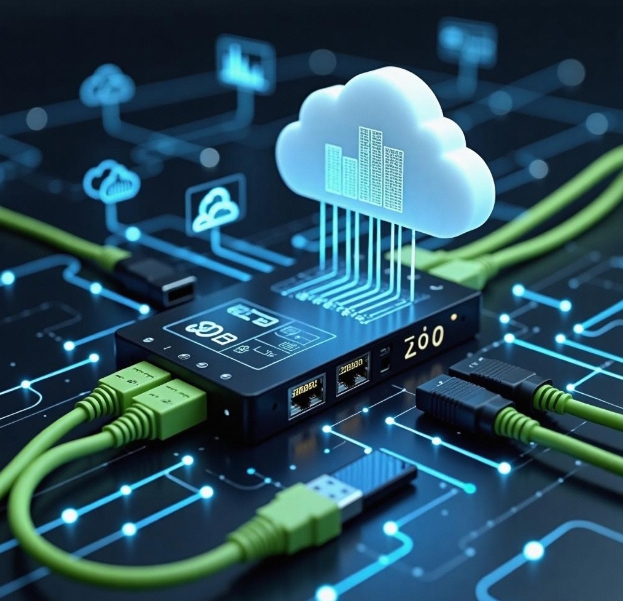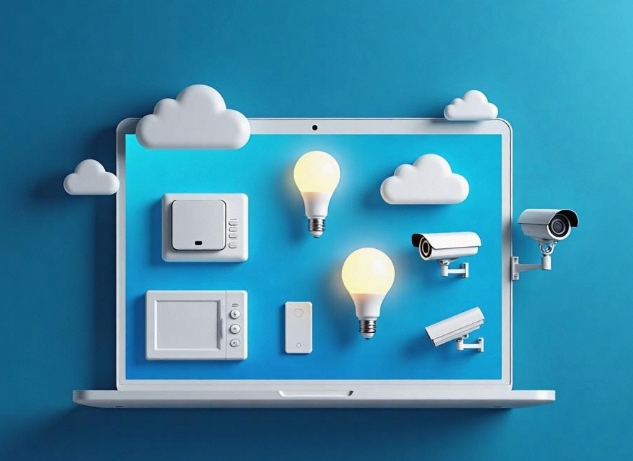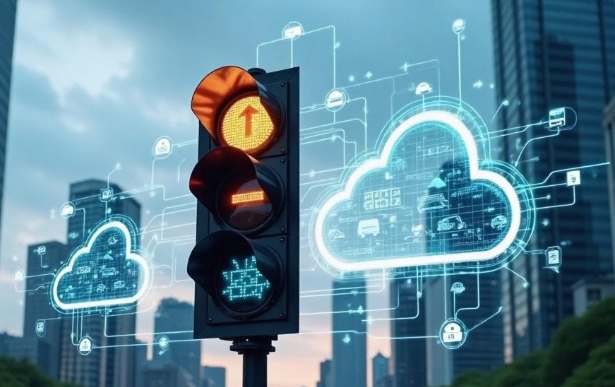Innovative Application Cases of Cloud Computing in the Internet of Things (IoT)
- latest articles
- 1.DApp Development & Customization: Merging Diverse Market Needs with User Experience 2.Analysis of the Core Technical System in DApp Project Development 3.How to achieve cross-chain interoperability in Web3 projects? 4.How does the tokenization of points reconstruct the e-commerce ecosystem? 5.How to Set and Track Data Metrics for a Points Mall? 6.What is DApp Development? Core Concepts and Technical Analysis 7.Inventory of commonly used Web3 development tools and usage tips 8.Development of a Distribution System Integrated with Social E-commerce 9.Six Key Steps for Businesses to Build a Points Mall System 10.What is DApp Development? A Comprehensive Guide from Concept to Implementation
- Popular Articles
- 1.Future Trends and Technology Predictions for APP Development in 2025 2.Analysis of the DeFi Ecosystem: How Developers Can Participate in Decentralized Finance Innovation 3.From Zero to One: How PI Mall Revolutionizes the Traditional E-commerce Model 4.DAPP Development | Best Practices for Professional Customization and Rapid Launch 5.Recommended by the Web3 developer community: the most noteworthy forums and resources 6.From Cloud Computing to Computing Power Leasing: Building a Flexible and Scalable Computing Resource Platform 7.How to Develop a Successful Douyin Mini Program: Technical Architecture and Best Practices 8.Shared Bike System APP: The Convenient Choice in the Era of Smart Travel 9.How to Create a Successful Dating App: From Needs Analysis to User Experience Design 10.From Design to Development: The Complete Process of Bringing an APP Idea to Life
With the rapid advancement of technology, cloud computing and the Internet of Things (IoT) have become two major driving forces behind modern technological transformation. The IoT, through the interconnection of various smart devices, makes the world more intelligent and convenient, while cloud computing provides robust technical support for all of this. Cloud computing offers massive data storage, computational power, and strong data analysis capabilities for the IoT, thereby driving innovation and development in IoT applications.
This article will explore some innovative application cases of cloud computing in the IoT, demonstrating how cloud computing supports the development of IoT technology and addresses issues in traditional IoT architectures.
I. Deep Integration of Cloud Computing and IoT
The combination of cloud computing and IoT is essentially a complementary relationship. IoT requires powerful data processing capabilities, real-time computing, and massive data storage, all of which cloud computing can provide as technical support.
Data Storage and Processing Capabilities
The volume of data generated by IoT devices is enormous. Traditional IoT architectures often rely on local servers for data processing and storage, which proves inadequate when dealing with large-scale data. Cloud computing, on the other hand, provides elastically scalable data storage and computational resources, ensuring that the massive data generated by IoT devices can be efficiently stored, analyzed, and processed.Remote Computing and Monitoring
Cloud computing enables IoT devices to remotely access data and applications via the internet, supporting global device interconnection. This advantage allows IoT systems to monitor, maintain, and manage devices in real-time across various scenarios, thereby enhancing system intelligence and efficiency.Data Analysis and Intelligent Decision-Making
IoT is not just about data collection; it also requires the analysis and processing of massive data to extract valuable information. Cloud computing platforms typically integrate advanced artificial intelligence and big data analysis technologies, enabling intelligent analysis of IoT data and providing real-time decision support. Cloud platforms can not only predict device failures by analyzing trends in IoT device data but also offer personalized services to users.
II. Innovative Application Cases of Cloud Computing in IoT
Smart Home: Taking AWS as an Example
In the field of smart homes, the application of cloud computing is transforming people's lifestyles. Amazon's AWS (Amazon Web Services) platform provides powerful cloud computing support for smart homes. By offering efficient cloud services, AWS enables smart home devices to easily connect to the internet and achieve synchronization and management of cloud data. For example, devices such as lighting, temperature control, and security in smart homes can be remotely controlled via the cloud platform, allowing users to monitor and manage home devices from anywhere.
Application Scenario:
Suppose a user sets up home temperature, lighting, and security systems through a smart home app on their phone. When the user is away, the system automatically adjusts the home environment and provides real-time feedback on device status to the cloud, which the user can check at any time. Additionally, the smart home system can automatically adjust based on environmental data to ensure comfort and safety at home.Smart City: Taking IBM's Watson IoT as an Example
Smart cities are a key area where cloud computing and IoT converge. IBM's Watson IoT platform offers a comprehensive solution to help city managers intelligently manage traffic, environmental monitoring, public safety, and more. For instance, in traffic management, traffic monitoring systems in smart cities use IoT sensors to collect real-time information on traffic flow and road conditions, which is then uploaded to the cloud platform for analysis and processing.
For example, by analyzing real-time traffic data, the system can predict traffic congestion in advance and adjust traffic flow through intelligent traffic signal control systems, reducing congestion and improving traffic efficiency.
Application Scenario:
In a large city, IoT sensors are deployed at major transportation hubs and intersections to collect real-time traffic data. The cloud platform analyzes this data in real-time. Through precise flow analysis, the system can predict peak hours and automatically adjust traffic signals to optimize traffic flow and alleviate congestion.Industrial IoT (IIoT): Taking GE's Predix Platform as an Example
Industrial IoT (IIoT) applies IoT technology in manufacturing by integrating sensors, machinery, and cloud computing platforms to achieve intelligent monitoring, data analysis, and predictive maintenance. General Electric's (GE) Predix platform is a typical example of an IIoT application.
In factory production lines, sensors collect real-time information on machine operating status, temperature, humidity, pressure, etc., and upload this data to the cloud. The cloud computing platform uses big data analysis techniques to analyze this data, predict potential equipment failures, and schedule maintenance or replacements in advance, thereby avoiding unexpected breakdowns and improving production efficiency and safety.
Application Scenario:
In an automobile manufacturing plant, the cloud platform connects all production line equipment, with each device equipped with sensors to monitor its operating status in real-time. Through cloud-based analysis of sensor data, the system can predict potential equipment failures and promptly notify maintenance personnel for inspection, reducing downtime and maintenance costs.
III. Advantages of Cloud Computing in IoT
Cloud computing brings numerous innovative and practical advantages to the IoT, primarily reflected in the following aspects:
Cost Efficiency
Cloud computing significantly reduces the reliance of IoT devices on local hardware and servers, lowering investment costs for enterprises. Companies can flexibly purchase cloud services based on demand, paying only for the resources they actually use, thus achieving efficient resource utilization.Flexibility and Scalability
The elastic computing resources provided by cloud platforms allow IoT systems to scale quickly according to demand, whether by increasing the number of devices or enhancing data processing capabilities. Cloud computing offers flexible solutions, enabling IoT to operate efficiently across applications of various scales.High Availability and Disaster Recovery
Cloud computing platforms typically feature high levels of redundancy and backup mechanisms, ensuring high availability for IoT systems. Even in the event of failures or disasters, the cloud platform can ensure continuous system operation and quickly recover data, preventing data loss and system downtime.Global Interconnection and Real-Time Capabilities
Due to the globally distributed architecture of cloud platforms, IoT devices can achieve global interconnection through cloud computing, enabling cross-regional data sharing and control. This provides significant convenience for multinational corporations and multi-regional applications.
IV. Future Outlook
With the continuous development of emerging technologies such as 5G and artificial intelligence, the integration of cloud computing and IoT will deepen further, bringing about more innovative application scenarios. In the future, cloud computing will continue to provide strong support for the IoT, driving rapid development in various fields such as smart homes, smart cities, intelligent transportation, and Industry 4.0.
IoT will no longer be limited to simple data collection and transmission; more intelligent analysis, prediction, and decision-making will be embedded into IoT systems. Cloud computing will become the core engine for IoT intelligence and automation, propelling the IoT from "sensing the world" into a new era of "intelligent decision-making."
Conclusion
The combination of cloud computing and IoT not only enhances the technical capabilities of IoT but also brings broad application prospects to various industries. Through these innovative application cases, we can see how cloud computing plays a critical role in the practical application of IoT. As technology continues to advance and improve, the application scenarios of IoT will become even more extensive, with cloud computing playing an increasingly important role.
-

Applications and Challenges of Cloud Computing in the Internet of Things (IoT)
With the continuous advancement of information technology, cloud computing and t···
-

Integration of Cloud Computing and Artificial Intelligence: Enhancing Intelligent Applications
With the rapid advancement of technology, cloud computing and artificial intelli···
-

Data Security and Privacy Protection in Cloud Computing Applications
With the continuous advancement of information technology and the rapid developm···

 Blockchain
Blockchain












